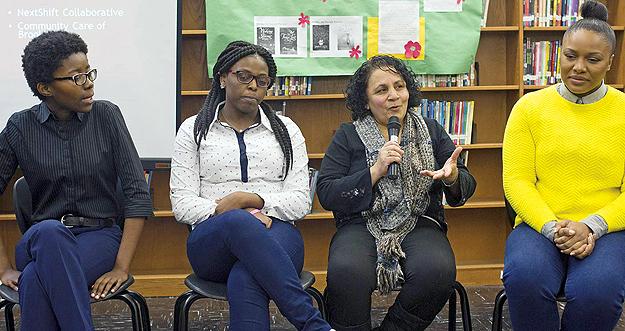Community Care Brooklyn: A new model for community health

When NYSNA, 1199SEIU, elected officials, and community and faith groups joined ranks in 2014, they formed a determined coalition on a mission to save Brooklyn’s Interfaith Hospital. After doing just that, the group did not disband. Instead, when the fight was over and the smoke had cleared, what emerged was a fully empowered organization: Community Care Brooklyn (CCB). CCB, a community engagement workgroup with more than eight hundred (800!) health, labor, government and social service member organizations, is building on past momentum and leading the charge in Brooklyn to create new models for community health. CCB’s most recent endeavor is to reduce the death rate from cardiovascular disease in East New York and Brownsville — two zip codes where heart disease is disproportionately high.
Identifying risk factors
Dr. David Cohen, Executive Vice President of Maimonides Medical Center and Director of Population Health, chairs the CCB. Working closely with NYSNA, 1199SEIU and the community, and with funding from Maimonides, DSRIP PPS, Dr. Cohen put together a Participatory Action Research (PAR) group last summer to identify social factors in the two Brooklyn neighborhoods contributing to the significant death toll from heart disease. They looked at five social determinants that are widely considered important predictors of cardiovascular health: the environment as well as physical, mental, social and financial stability.
But as Cohen and CCB saw it, the project had to go a step beyond assessing risk factors. CCB wanted input from the local community on how best to address the underlying issues. “Addressing the social determinants of health will create both health and wealth,” CCB member Bruce Richard said about the project at a CCB December 14 meeting in Brooklyn. “If the community sees itself as its own change agent, it will happen.” Richard previously partnered with NYSNA on Save Interfaith and is Senior Consultant to the 1199SEIU President on Community Health.
Principal investigators were brought in from the Massachusetts Institute of Technology and Medgar Evers College to oversee the project. Under their supervision, local students from Medgar Evers and Thomas Jefferson/ W.A.T.C.H. (World Academy for Total Community Health) High School designed a survey and collected in-person interviews with 525 community residents, took photos documenting neighborhood conditions, and conducted participatory mapping.
The 50-question survey addressed all five social determinants of health. It included questions about food justice and nutrition, and explored community opinions about urban farming at schools, at hospitals, and on vacant lands as a way to make organic produce more affordable and accessible.
Documenting conditions
Environmental hazards were documented in the field by students, who photographed parks and recreational facilities. Resident feedback was mapped on topics such as safety, air and water quality, and other natural and man-made environmental issues.
The final report is being drafted now and will address how residents of East New York and Brownsville visualize health in their community. It will provide an all important blueprint for moving forward with community priorities. And it will outline recommendations for utilizing community assets and ideas to attack the high cardiovascular death rate.
Researchers feel confident that they can overcome obstacles to environmental, physical, mental, social and financial health documented in the report. And they plan to pursue additional New York State DSRIP funding in order to address specific community health needs identified in the findings.
According to Dr. John Flateau, a project leader and Medgar Evers DuBois Bunche Center for Public Policy professor, this may be the first PAR healthcare research project to be designed and implemented by actual members of the community under study. With healthcare under attack, this novel approach to community empowerment and health — pioneered by NYSNA, 1199SEIU and others members of the CCB — has become even more important than it was at the project's outset. “I am hopeful that once the final report is issued, it will serve as a model for other communities seeking to tap into the ideas of their own residents to solve problems from within,” Dr. Flateau said.